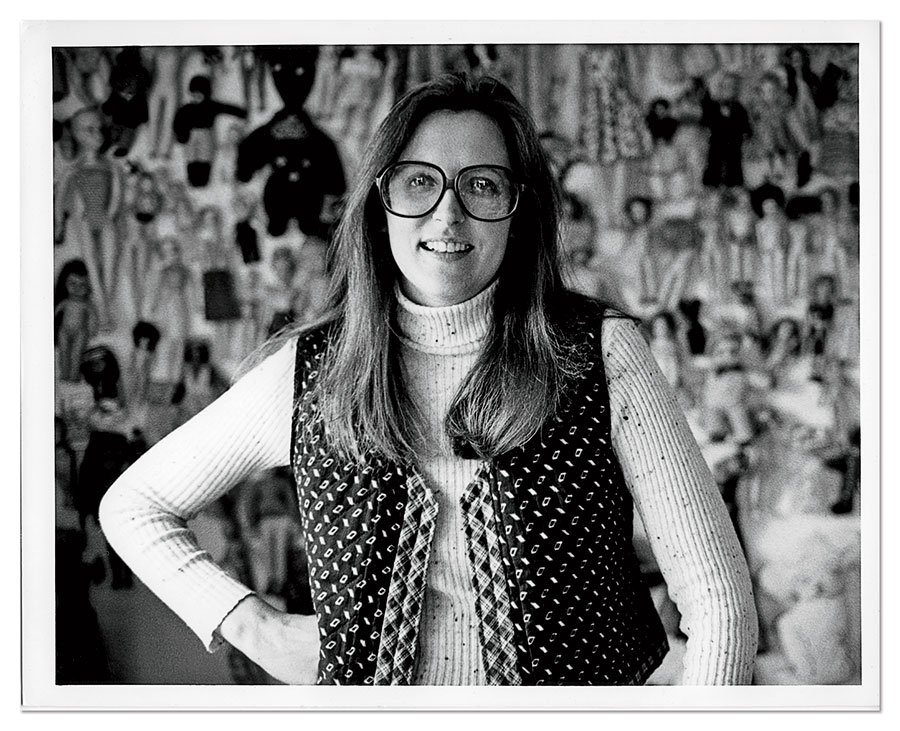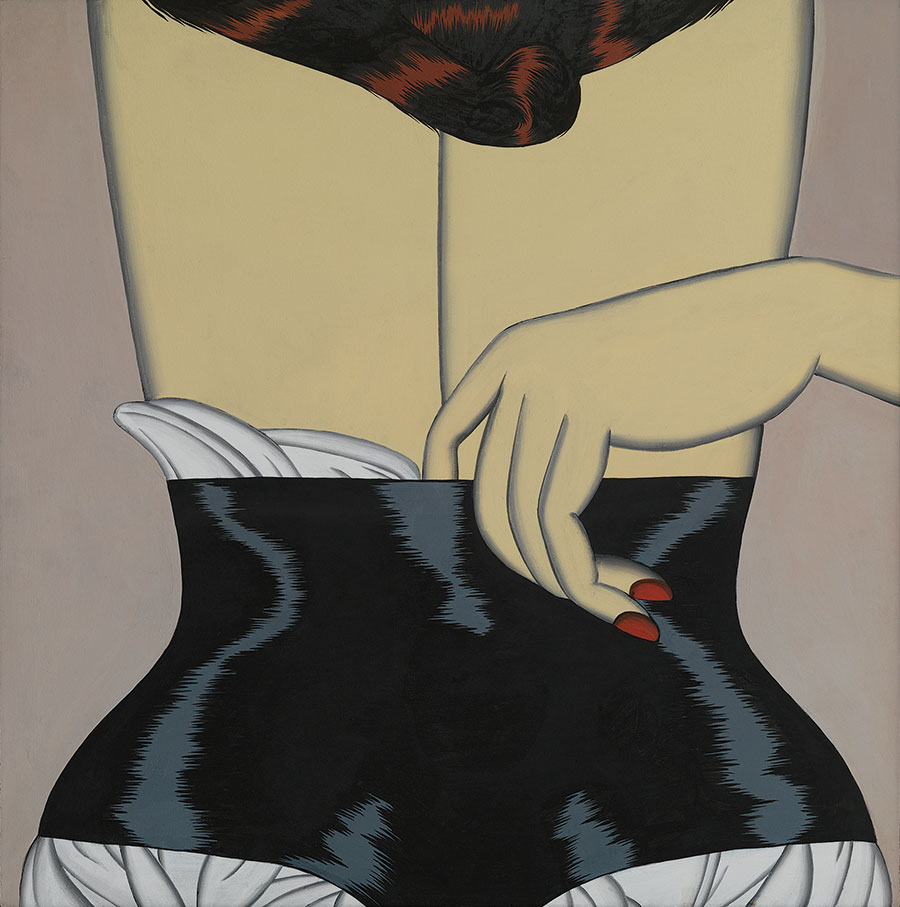An amateur archivist.” That’s what curator Thea Liberty Nichols calls the late artist Christina Ramberg, who will get a retrospective at the Art Institute of Chicago starting April 20. Ramberg was an artist and a teacher, but, as Nichols learned from months sifting through her ephemera — diaries, postcards, 35 mm slides, a doll collection — she was also a kind of historian. The objects that inspired Ramberg “didn’t exist in a library, or in an art history book,” Nichols explains. “She really needed to collect the material for herself.”
A member of the Chicago Imagists who came out of the School of the Art Institute of Chicago in the late 1960s, Ramberg is best known for her glossy acrylic-on-Masonite paintings of women’s torsos cinched by lingerie or of hands wrapped in thick strands of hair. Though her career was cut short — she died in 1995 at 49 from Pick’s disease, a type of dementia — Ramberg was a prolific and varied artist: painting and quilting, teaching at SAIC, and roaming the city to photograph asphalt siding and flower beds made out of old tires.
In her mind, such everyday objects “weren’t something that had to be raised to art,” says artist Phil Hanson, whom Ramberg married in 1968. To her, they were already art. Other times, her inspiration came from traditional works. On a trip to Italy, she couldn’t stop sketching torsos of Christ that appeared in Sienese paintings, an influence that fed into her art, says Hanson. (Though the couple split up in the ’80s, they remained close.)
Cocurated by Nichols and Mark Pascale, who taught alongside Ramberg at the SAIC, the exhibit marks the first in three decades to be dedicated solely to Ramberg. It’s long overdue. “There are a lot of contemporary artists who borrow heavily from her without admitting it,” says Pascale. In some ways, Ramberg’s work is even more relevant today. “She’s playing around with what it is to be feminine, the standards or the expectations, and kind of undermining it at the same time,” Pascale says.

Hanson remembers Ramberg’s discomfort with viewers interpreting her paintings as sexual just because they depicted female forms, recalling her displeasure at one conversation with a partygoer who wanted to talk at length about bondage. Looking at just the content of her paintings — bound female bodies — misses much of what makes Ramberg’s work powerful. “It’s about that monumental form, the strength of the form that she has that meets with this imagery,” Hanson explains.
Employing Ramberg’s archives, the exhibition showcases not just the art but the person behind it. Though he’d been close with Ramberg — he gave a eulogy at her funeral — Pascale found himself surprised by what he learned while preparing the retrospective. He left the task of going through Ramberg’s diaries to Nichols, because, he explains, “it was too hard for me to read about her debilitating self-doubt.” The Ramberg he knew was self-assured, with a dry sense of humor.
In her professional life, she seemed bold and decisive, no matter the consequences. Sewing had been a part of her life since childhood (she made many of her own clothes, a useful skill for a woman who stood 6-foot-2), but it didn’t supplant painting until the ’80s, when she threw herself into quiltmaking. Ramberg’s main dealer dropped her, apparently uninterested in her new focus. At first, she made quilts in the traditional patterns of the American South, tweaking the fabrics to incorporate polyester scraps from a Japanese kimono. Later, she approached them more unconventionally, like paintings, rather than working from a grid. Some of her quilts have never before graced the walls of a museum. Owned by Chase Bank, they have decorated corporate offices. “We freed them for a bit,” Pascale says.
Ramberg likely would have appreciated those pieces making their way into public view, judging by how she cherished others’ works. Nichols notes that many of Ramberg’s photo slides are of her friends’ art; she saved postcards from them and gallery cards from their exhibitions. It was all part of how she connected to what was around her, Hanson recalls: “She paid attention to the world.”



